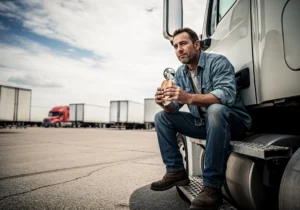A study analyzed all 50 states according to six metrics to identify the places with the highest rates of drunk driving.
A total of 37 people die every day in the U.S. in crashes caused by drivers under the influence of alcohol, which equals one death every 39 minutes. Despite government education efforts, many continue to drive under the influence.
Driving with a blood alcohol level of 0.08 or higher is illegal in all states, except in Utah, where the limit is 0.05. A Forbes Advisor study analyzed all 50 states using six metrics to identify the states with the highest rates of drunk driving. The results were as follows:

The worst states for drunk driving
6. Oregon
Oregon scored 86.53 out of 100 across all metrics, ranking fifth in the percentage of traffic deaths caused by drivers with a blood alcohol level (7.85%) and ninth in fatalities caused by drunk drivers (35.89%). It also has the 11th highest rate of drivers under 21 involved in fatal crashes, with 0.53 per 100,000 licensed drivers.
5. North Dakota
North Dakota ranked fifth with a score of 87.65 out of 100. It has the second-highest rate of DUI arrests and ranks ninth in drunk drivers involved in fatal crashes (6.11 per 100,000 drivers). It also has the 10th highest rate of deaths in crashes involving drunk drivers.

4. Wyoming
Wyoming scored 96.82 out of 100, making it one of the worst states in this category. It has the second-highest rate of deaths in crashes involving drunk drivers, with 6.78 per 100,000 residents, and ranks third in DUI arrests. It also has the third-highest rate of drunk drivers involved in fatal accidents and the fifth for drivers under 21 involved in fatal collisions.
3. Texas
Texas ranks third with a score of 98.66 out of 100, with a fatal crash rate of 8.30 per 100,000 drivers. Additionally, 42.37% of traffic deaths are caused by alcohol-impaired drivers. Texas ranks third in the rate of drivers under 21 involved in fatal collisions and sixth in deaths from accidents involving drunk drivers.

2. South Dakota
South Dakota takes second place with a score of 98.78 out of 100. The state has a DUI arrest rate of 879.12 per 100,000 drivers, with 35.14% of traffic deaths caused by drunk driving. It also ranks eighth in drivers under 21 involved in fatal crashes, ninth in deaths with a blood alcohol level, and 11th in deaths from accidents involving drunk drivers.
1. Montana
Montana leads the country with a perfect score of 100, making it the worst state for drunk driving. It ranks first in drunk drivers involved in fatal accidents, with 8.57 per 100,000 drivers, as well as in deaths in crashes involving drunk drivers. It also has the highest percentage of traffic fatalities caused by drunk drivers, at 43.51%, and the highest rate of drivers under 21 involved in fatal crashes.


Women’s safety in the transport sector: urgent priorities
International Day for the Elimination of Violence against Women is observed today, November 25. International Day for the Elimination of Violence against Women is observed

Federal CDL policies linked to thousands of lost trucking jobs
Federal government measures regarding CDLs and English-language proficiency requirements have resulted in the loss of thousands of jobs in the trucking industry. Federal government measures

Thanksgiving 2025: Weather and Road Conditions Across the U.S.
Thanksgiving 2025: What Truckers Need to Know About Weather and Road Conditions Across the U.S.

Comprehensive Guide to the New Federal Rule for Accessing CDL Licenses
The federal government has redefined who can apply for, renew, or retain a Commercial Driver’s License (CDL), introducing new restrictions for migrants and issuing direct

What drivers want: more mileage, more pay
The results of the annual Commercial Carrier Journal survey, conducted in collaboration with Netradyne, “What Drivers Want,” have now been published. The results of the

U.S. Unveils 1st Female Crash-Test Dummy, Sparking Debate: Are Accidents Different for Men and Women?
The new THOR-05F marks a milestone: for the first time, a crash-test dummy accurately reflects the female anatomy. Officials argue that decades of safety testing based on male-bodied models left women more vulnerable to severe injuries. The announcement aligns with the administration’s broader push to reintroduce biological sex classifications in medical and safety policy.
